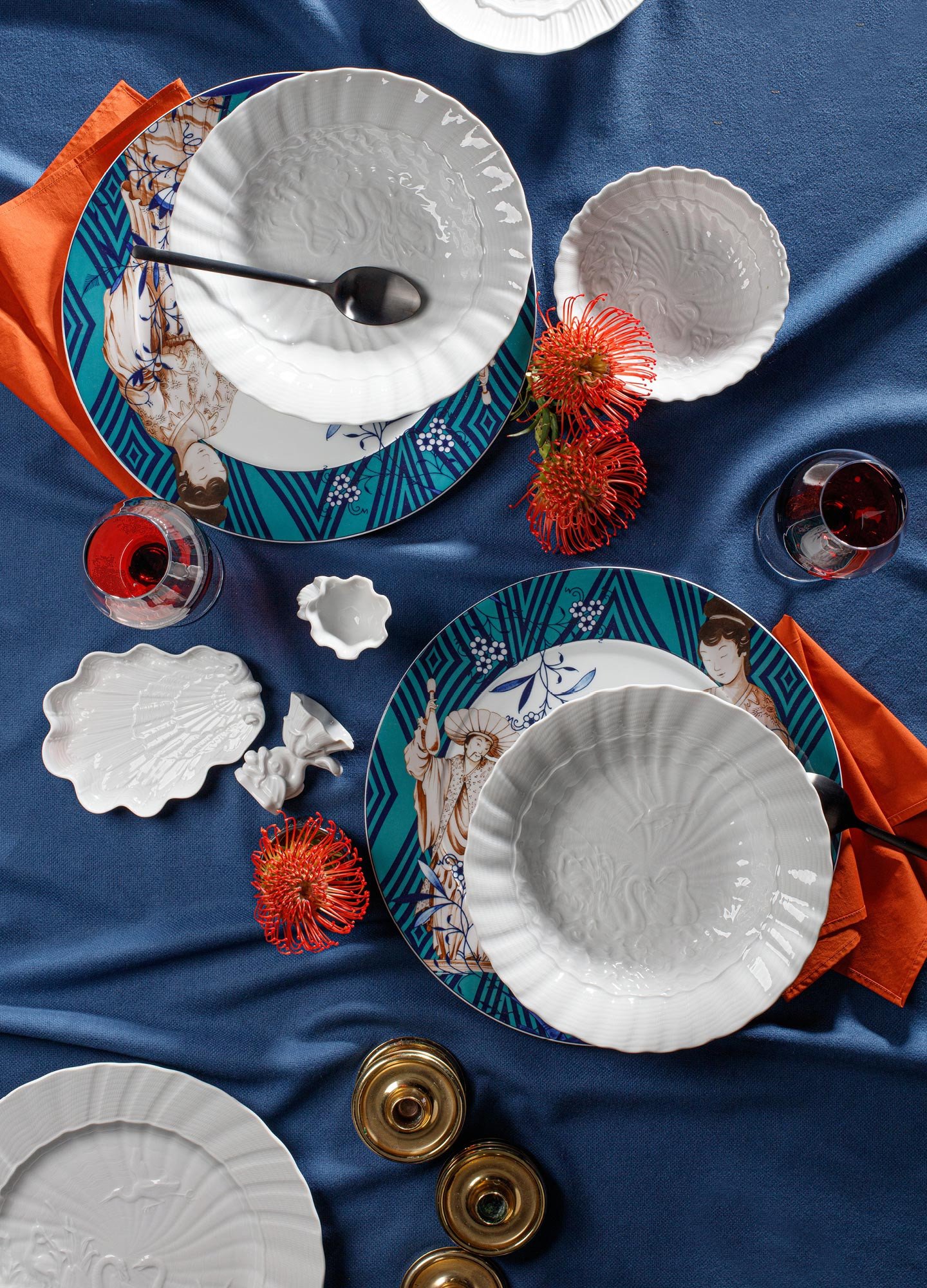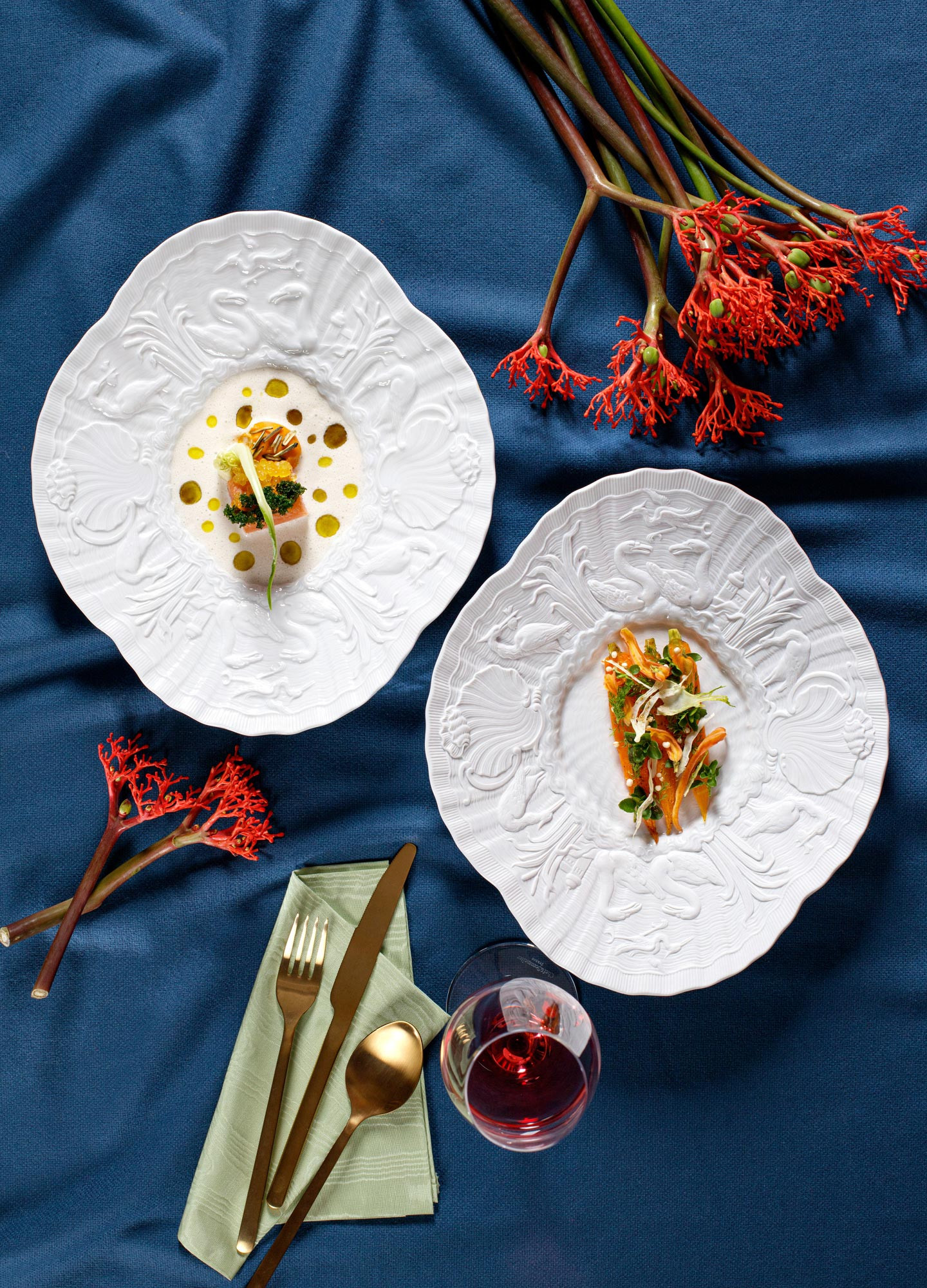Swan Service
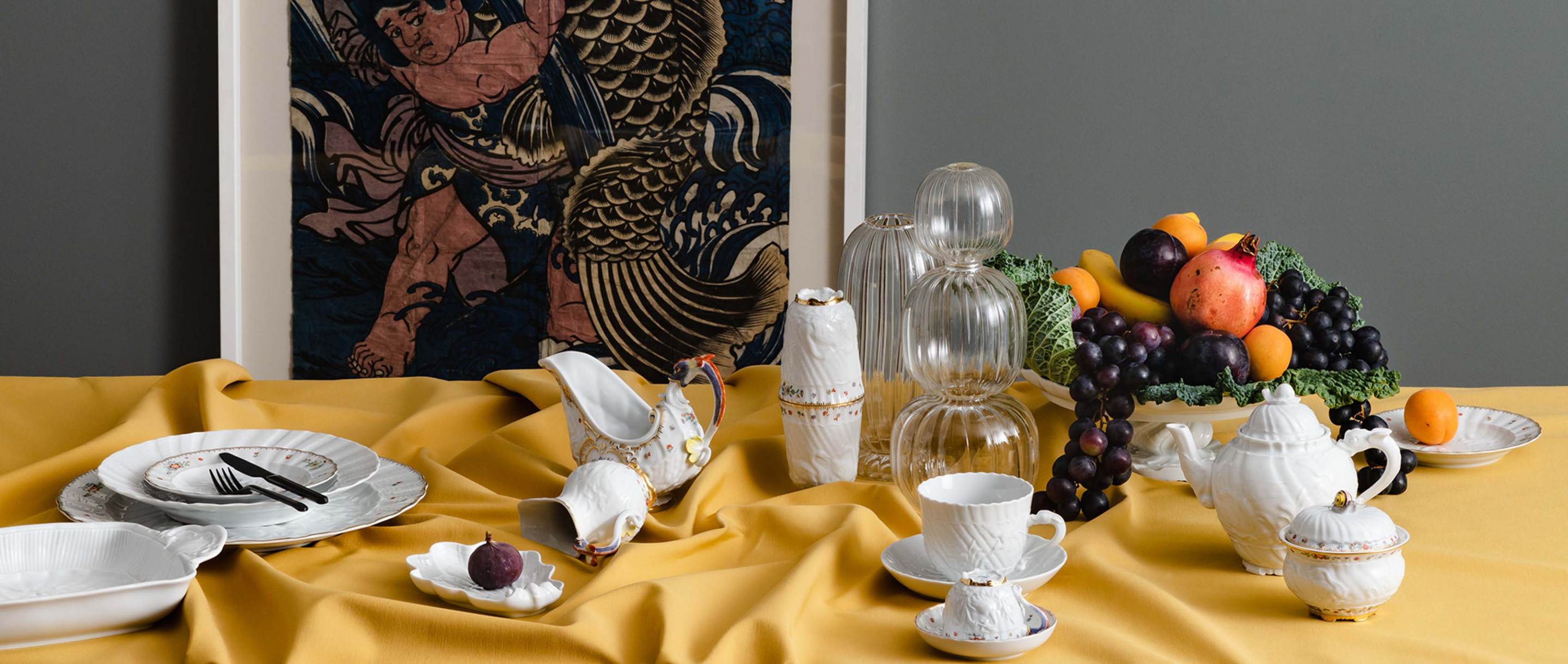
It is the most spectacular testimonial to a dazzling, bygone era, the opus magnum of German Baroque art: the “Swan Service” by Johann Joachim Kaendler. Commissioned in 1737 by Count Heinrich von Brühl, Prime Minister under King Augustus III and later head supervisor of the royal porcelain manufactory, the service of the century needed five years until completion. Never before had an ensemble of this scale been created, and with such a lavish wealth of sculptural details. The original service, designed for 100 people, comprised more than 2200 pieces. The pair of namesake birds, swimming through reeds, appear in porcelain relief, for which Kaendler took inspiration from drawings and etchings in collections in the nearby capital and royal seat of Dresden. Still formed and painted by hand in the Meissen manufactory, this one-of-a-kind service from the royal court of August III brings Baroque banquet culture into the present – steeped in Meissen’s tradition.
“The ‘Swan Service’ from MEISSEN brings the style and grandeur of the Baroque banquet table into the present – a page from the illustrious tradition of Europe’s oldest porcelain maker.”
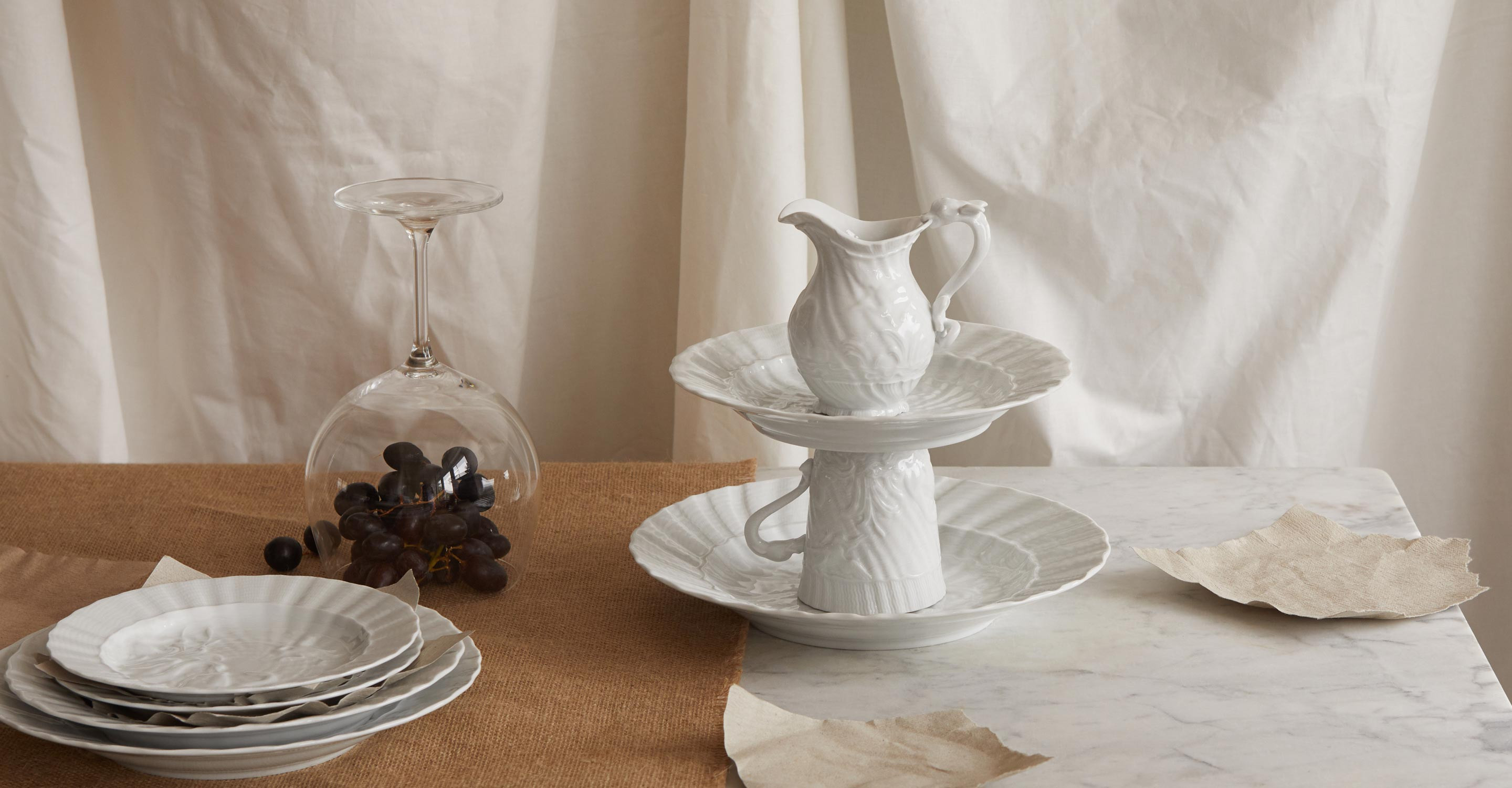
History
The core motif of the wide-ranging "Swan Service" is rippling water, symbolizing the eternal wellspring of life. The surface of each piece is finished with a delicate, intricate wave relief that accentuates the plasticity of the high-quality Meissen porcelain.
-
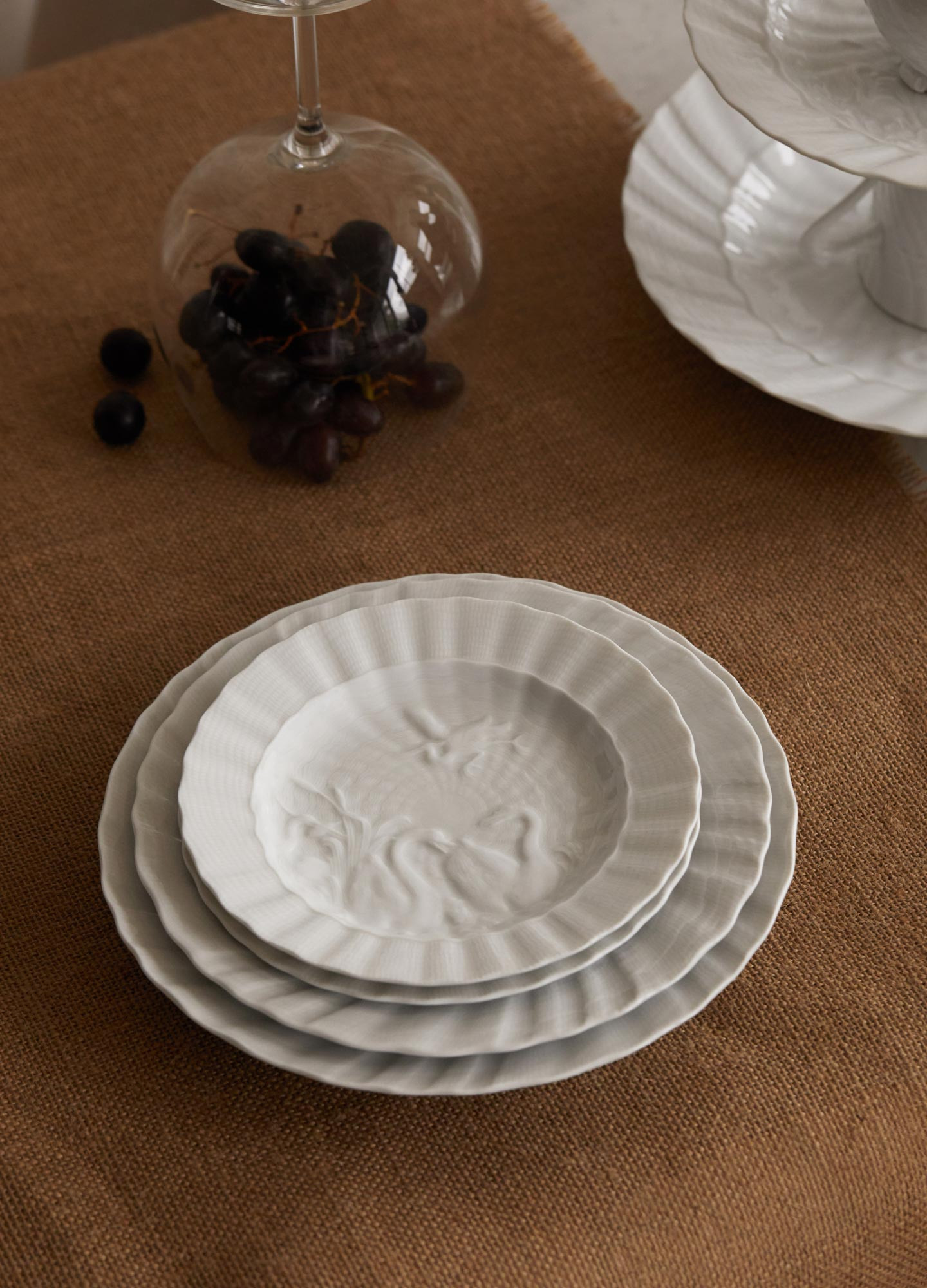 WhiteStill produced by hand, the nearly three-centuries-old reliefs of the “Swan Service” are testament to the extraordinary artisanship and quality of Meissen porcelain. The richness of details is put into centre focus by this puristic white variant. In continuation of the service’s namesake birds, each component of the collection depicts a mythological motif in different variations. The filigree contours of the relief-adorned surfaces break up the light, lending the detailed figures the look of near transparency with porcelain’s characteristic shimmer.
WhiteStill produced by hand, the nearly three-centuries-old reliefs of the “Swan Service” are testament to the extraordinary artisanship and quality of Meissen porcelain. The richness of details is put into centre focus by this puristic white variant. In continuation of the service’s namesake birds, each component of the collection depicts a mythological motif in different variations. The filigree contours of the relief-adorned surfaces break up the light, lending the detailed figures the look of near transparency with porcelain’s characteristic shimmer. -
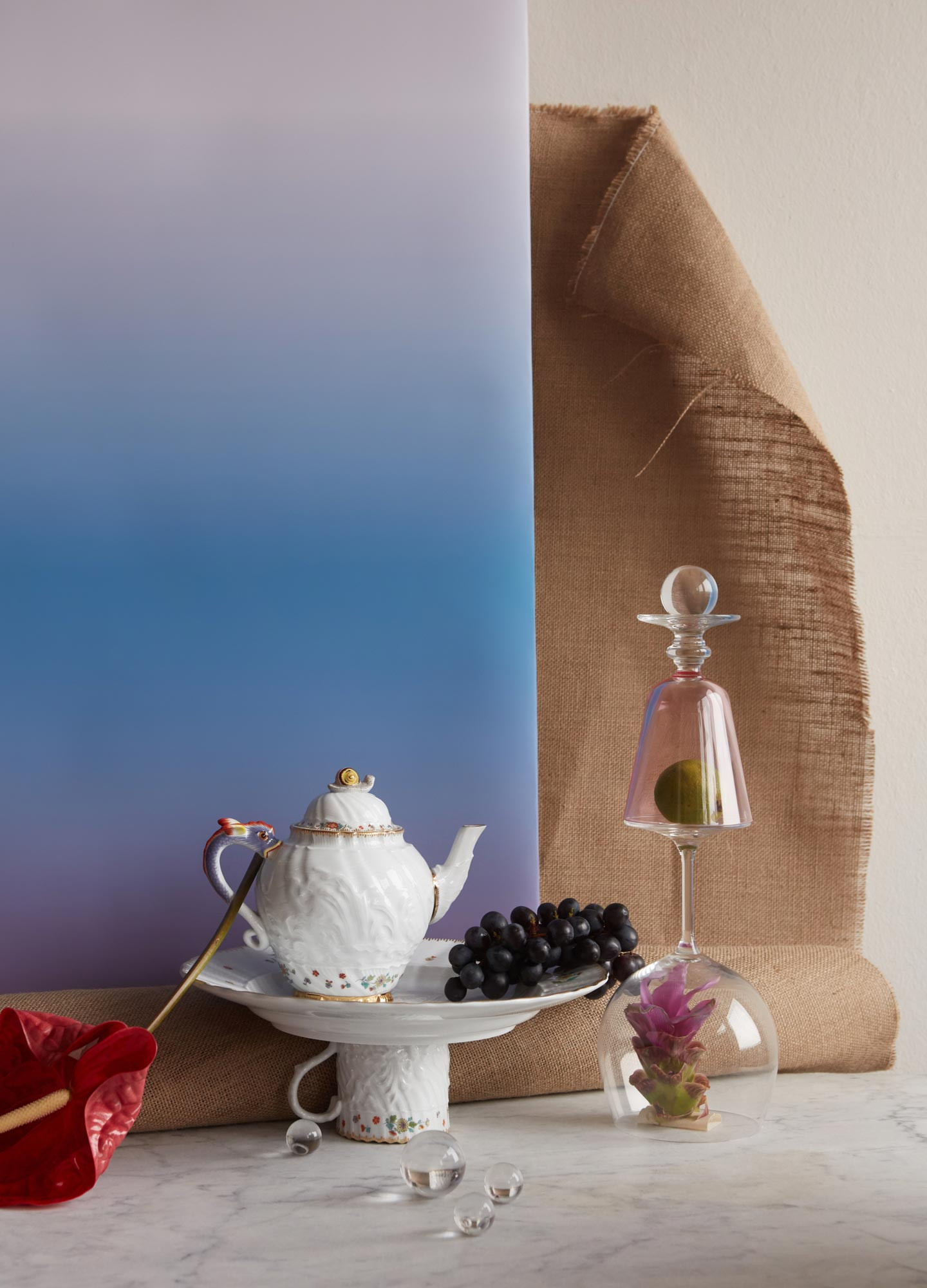 Indian Flower BranchesThe “Indian Flower Branches” is one of the most beloved decorative features of the Meissen manufactory. Modelled after East-Asian archetypes of “Indian” painting, the floral motif abounds with symbolism. The lotus flower, a token of purity and enlightenment, occupies a prominent position. The pure, unblemished blossom that rises beaming from out of the mud is a symbol whose metaphorical meaning unfolds on Meissen porcelain. Reproducing the blossom petals on the relief surface demands the most delicate brushwork from the manufactory painters. The decorative process is topped off by specialized gold painters, who accentuate the contours of each piece with a rim of real, high-karat gold.
Indian Flower BranchesThe “Indian Flower Branches” is one of the most beloved decorative features of the Meissen manufactory. Modelled after East-Asian archetypes of “Indian” painting, the floral motif abounds with symbolism. The lotus flower, a token of purity and enlightenment, occupies a prominent position. The pure, unblemished blossom that rises beaming from out of the mud is a symbol whose metaphorical meaning unfolds on Meissen porcelain. Reproducing the blossom petals on the relief surface demands the most delicate brushwork from the manufactory painters. The decorative process is topped off by specialized gold painters, who accentuate the contours of each piece with a rim of real, high-karat gold.
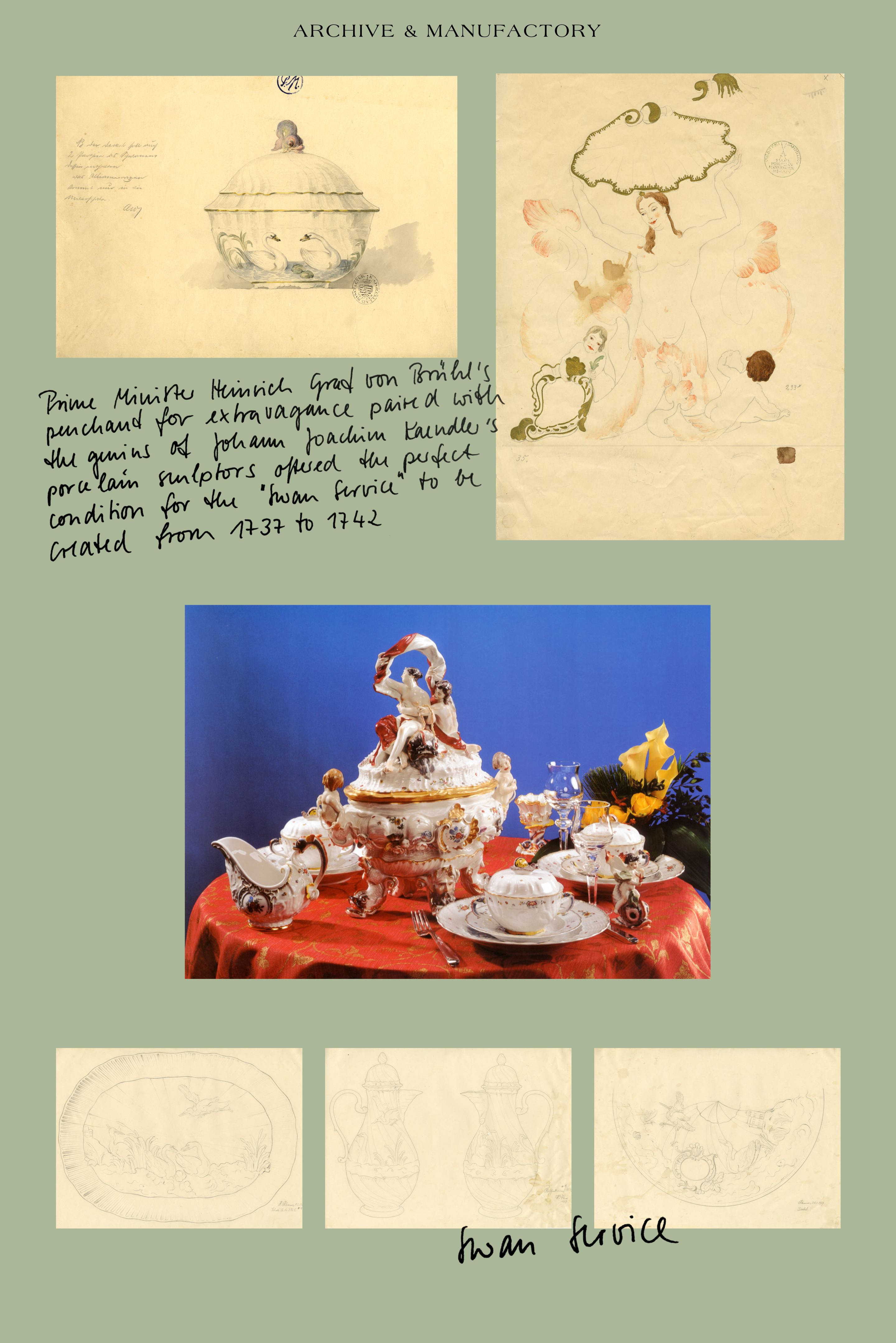
Campaigns
-
01
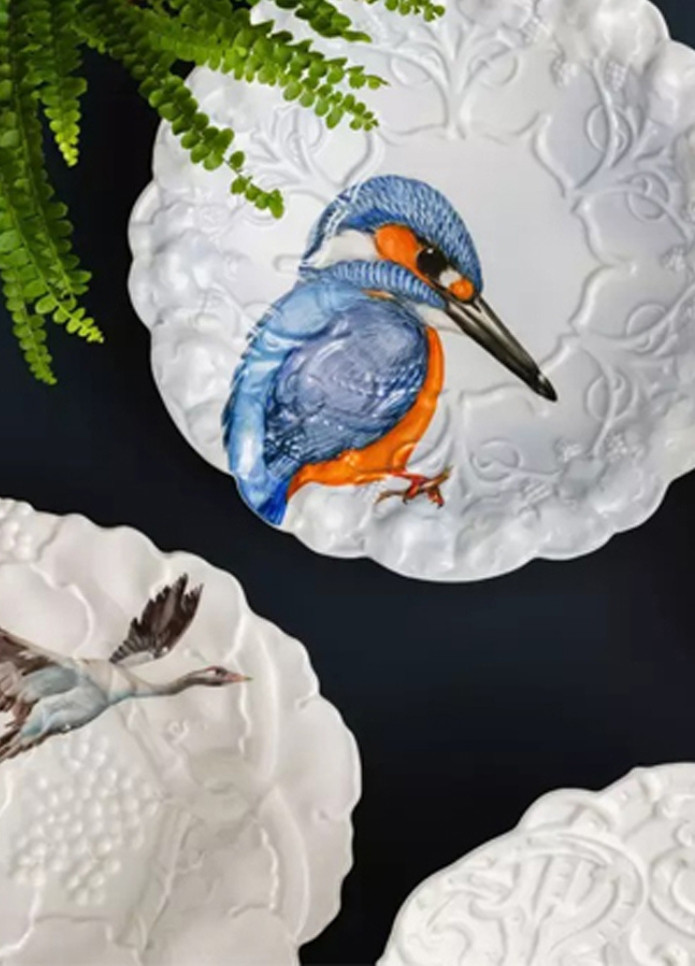 New SplendourA series of 19th-century decorative objects awakes from the archive, lavishly embellished with a contemporary rim-to-rim floral decor
New SplendourA series of 19th-century decorative objects awakes from the archive, lavishly embellished with a contemporary rim-to-rim floral decor -
02
 Chris AntemannBaroque figurines, peppered with satirical quips and erotic innuendos – Chris Antemann has created for MEISSEN an extensive collection of limited-edition art works
Chris AntemannBaroque figurines, peppered with satirical quips and erotic innuendos – Chris Antemann has created for MEISSEN an extensive collection of limited-edition art works


